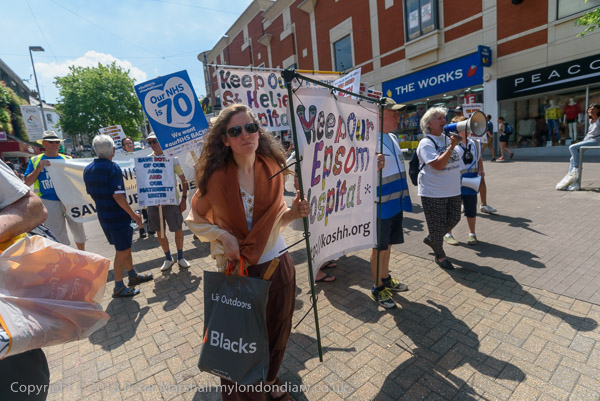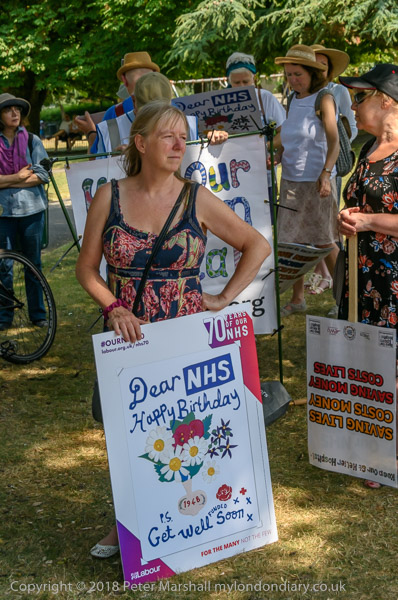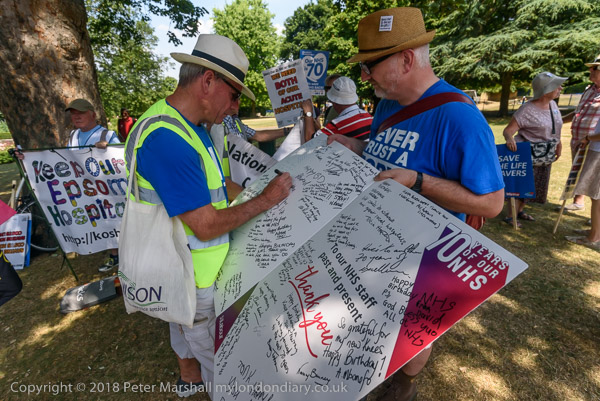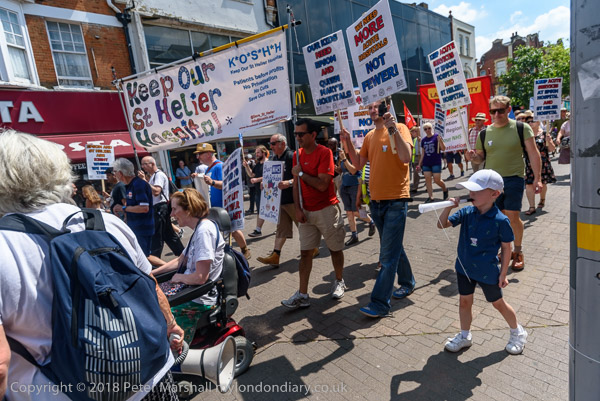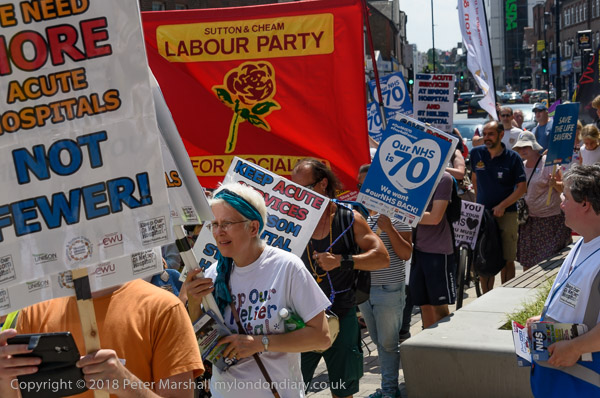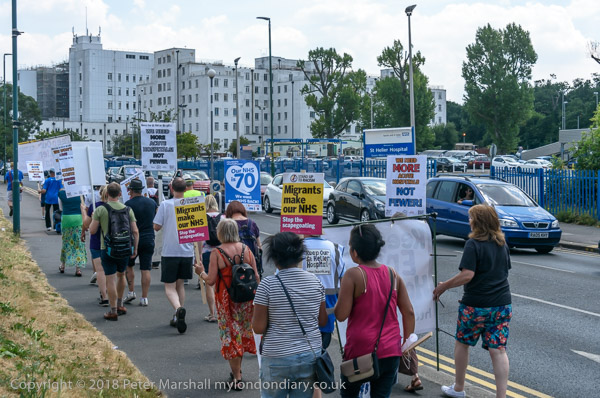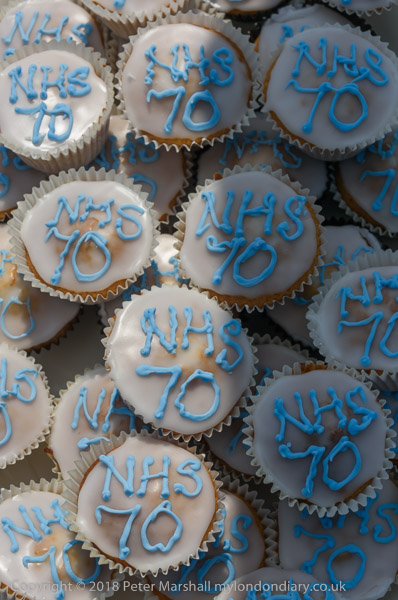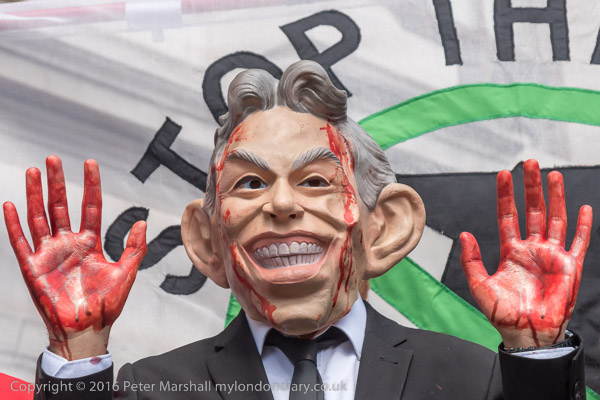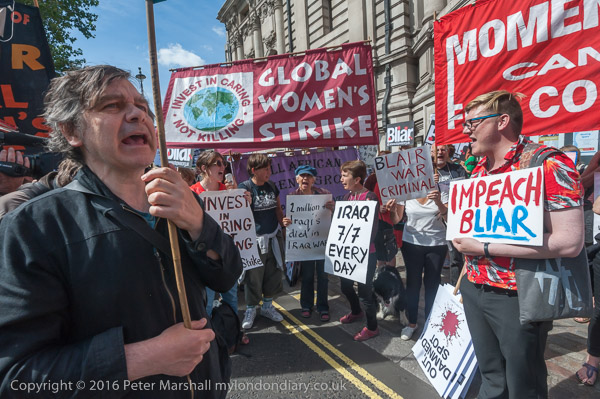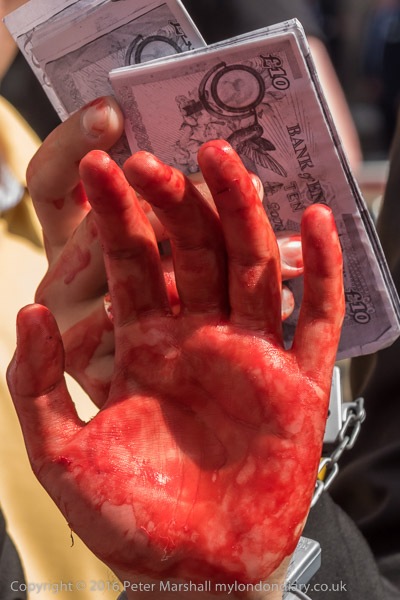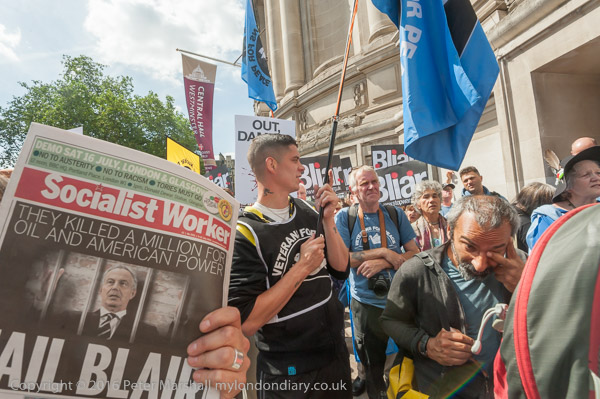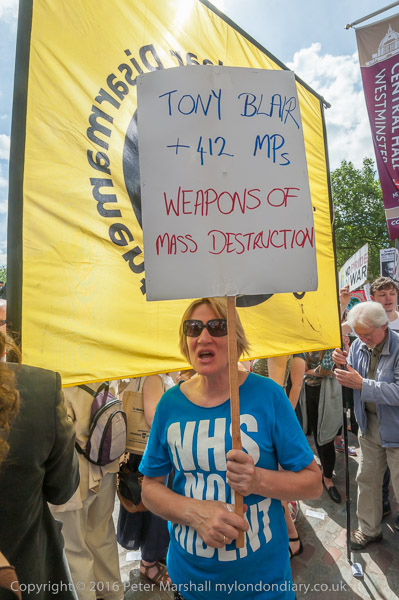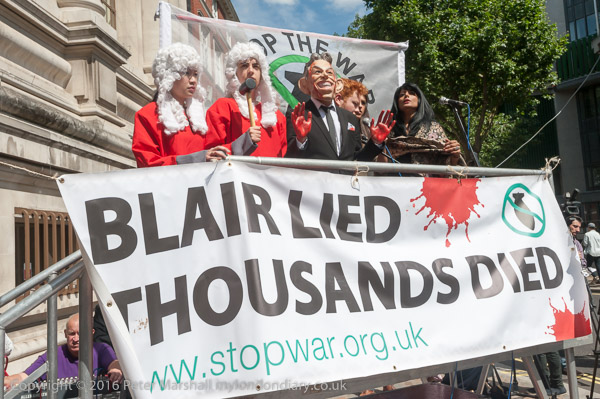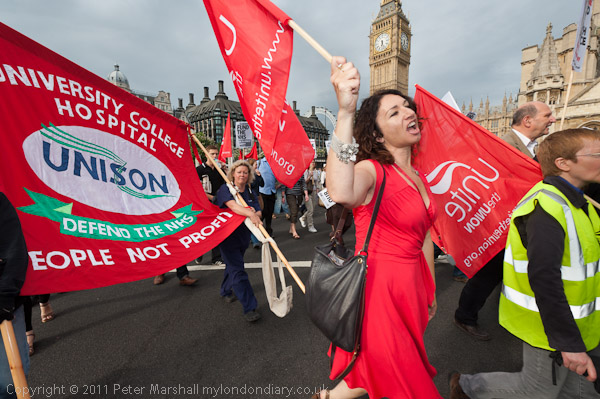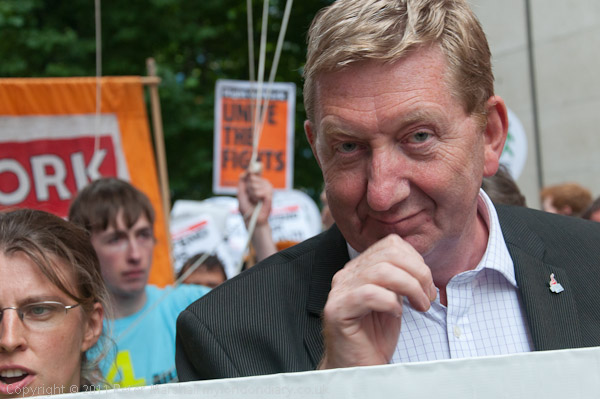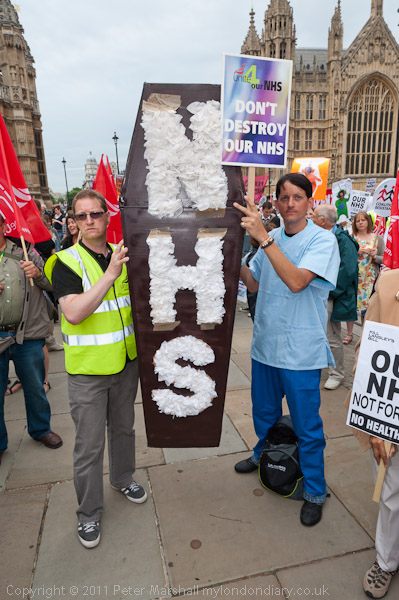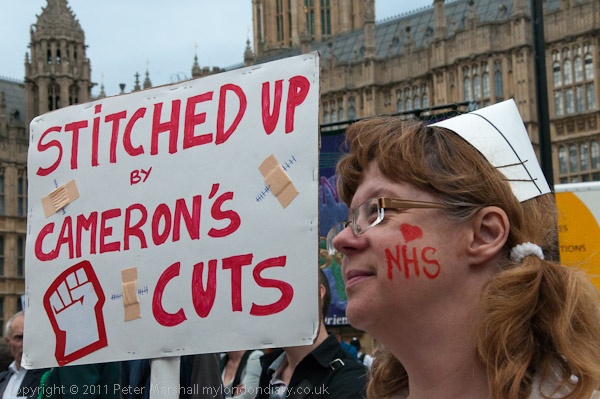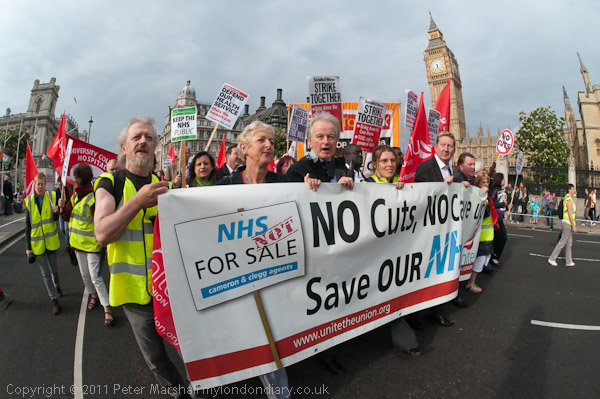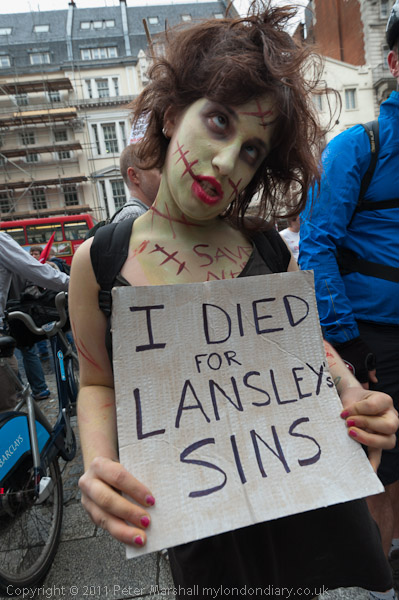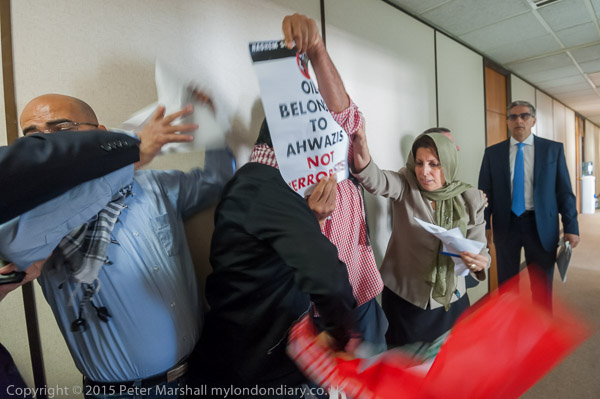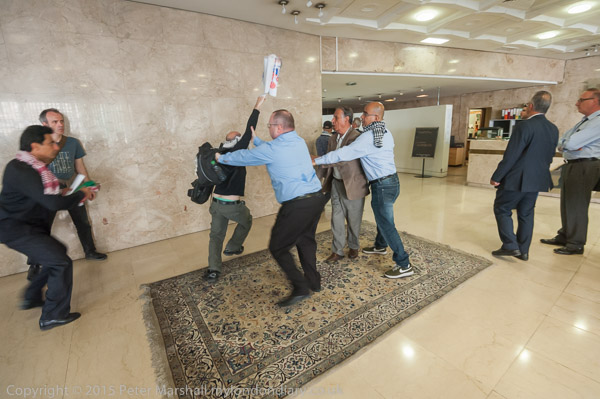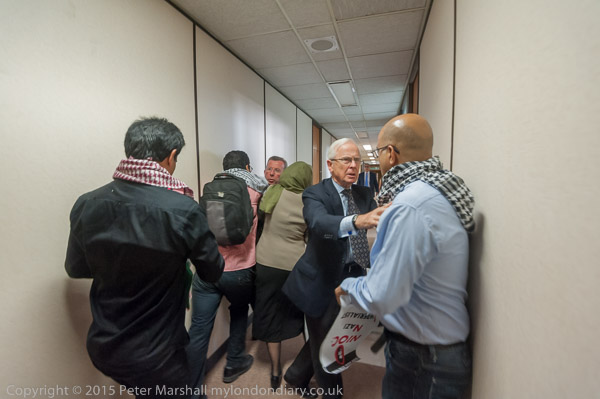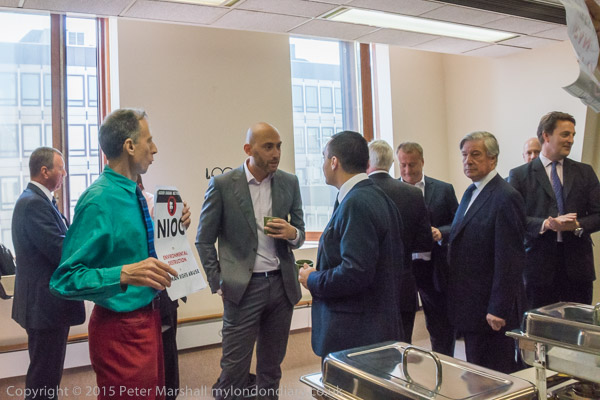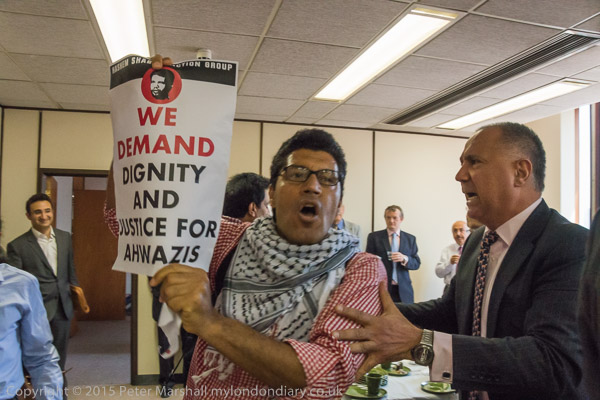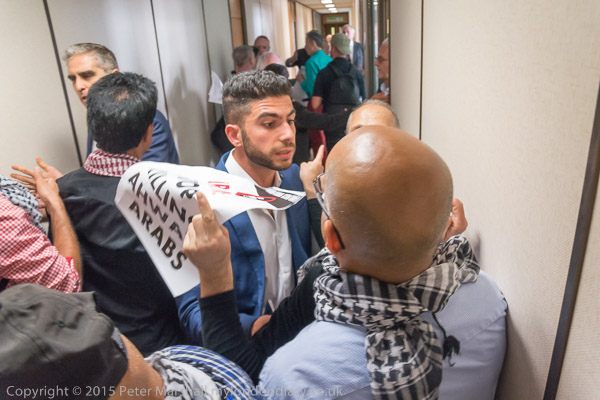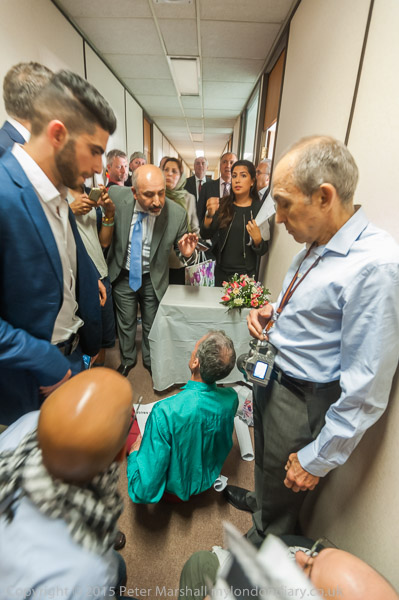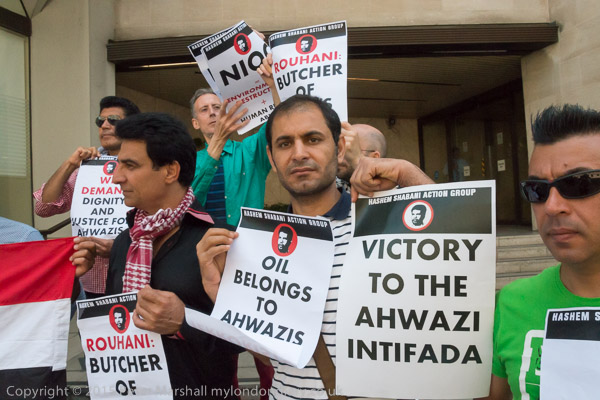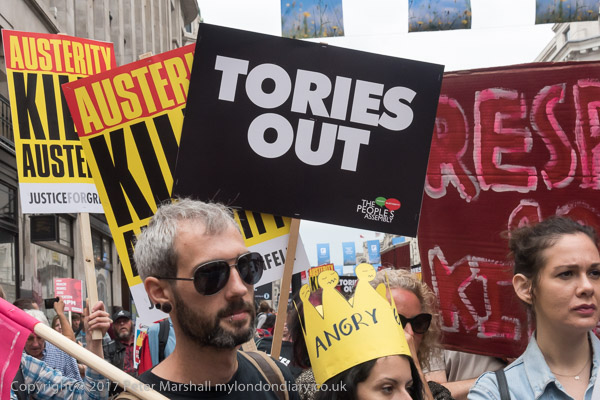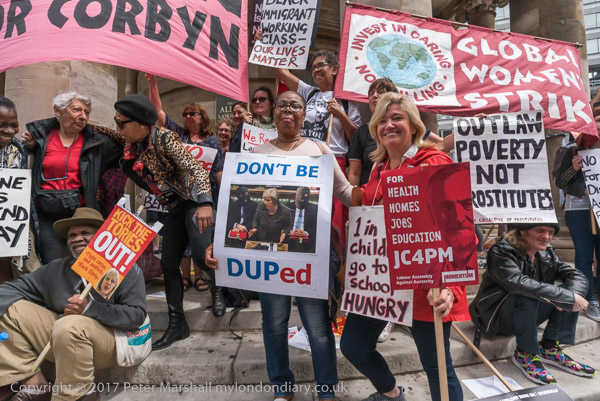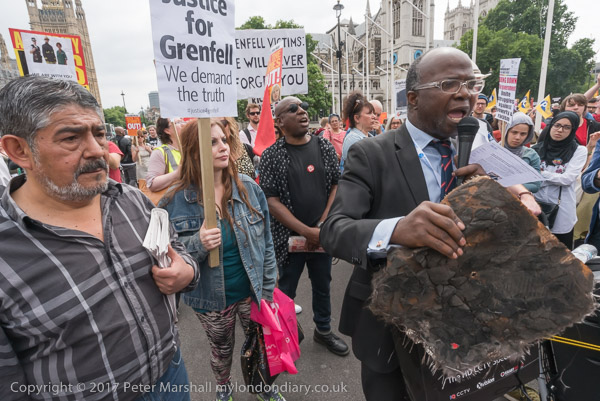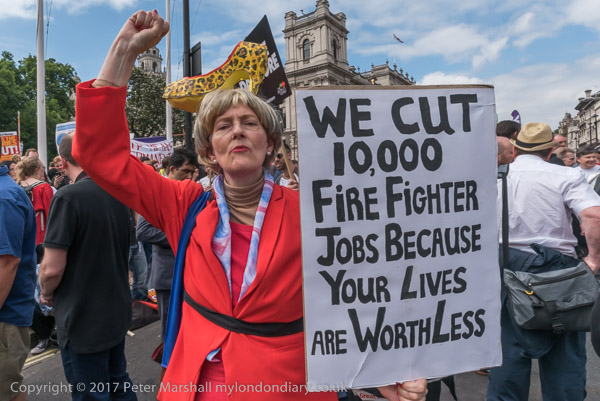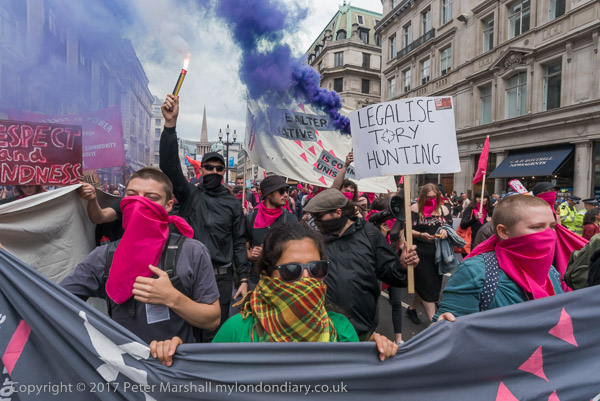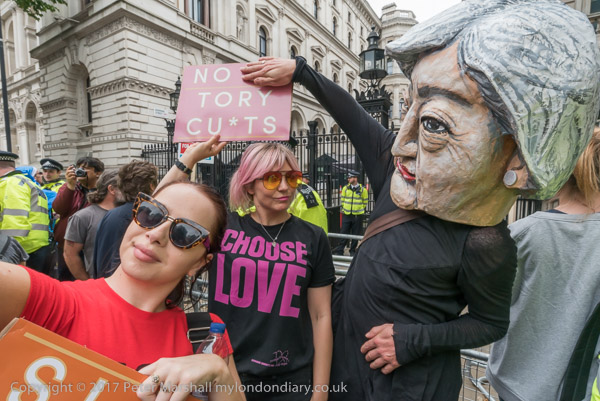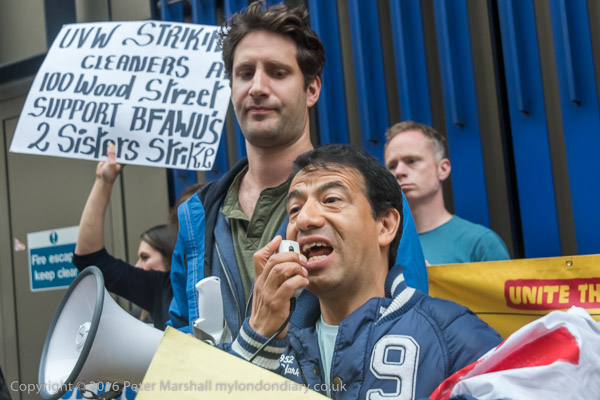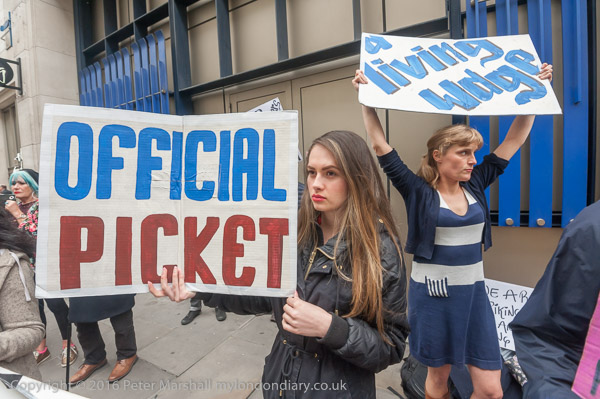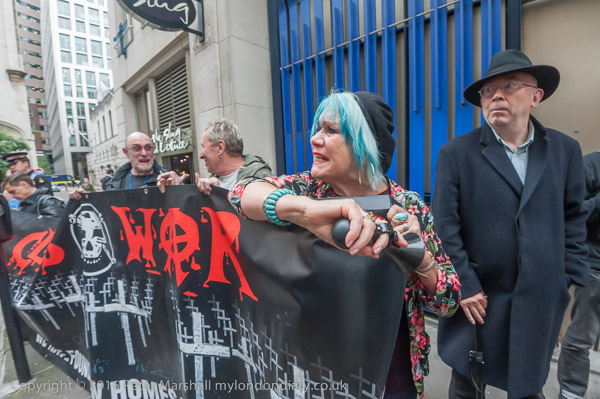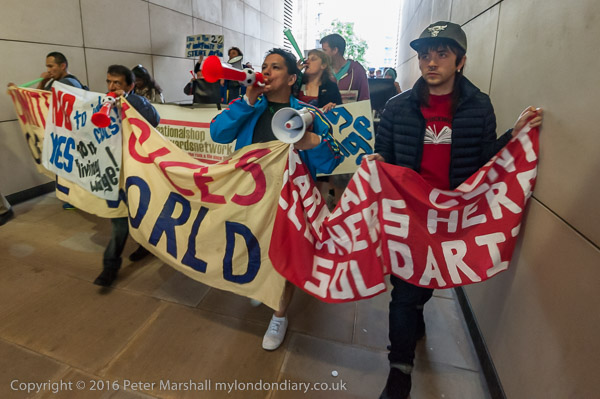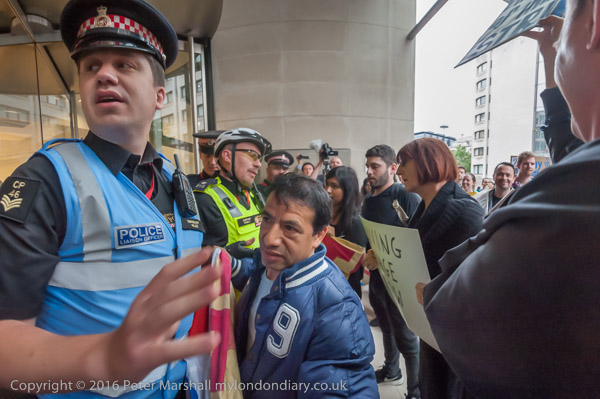
I’ve almost given up on photographing the annual Pride Parade in central London, which has become such a corporate event, though as in this event in 2017 there are sometimes things happening around it which still have some political edge – and even inside it, generally relegated to well behind the corporate razzmatazz.
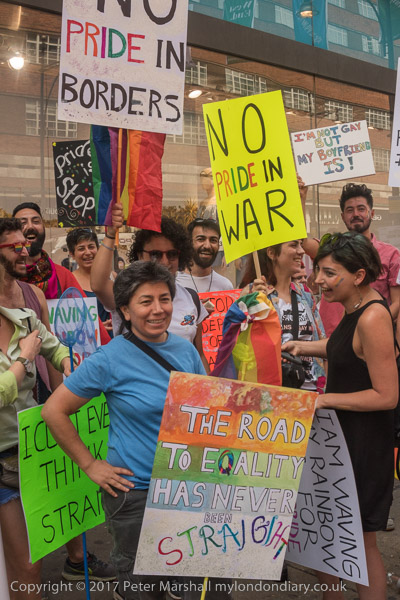
As I wrote on 8th July 2017:
“Pride over the years has degenerated from the original protest into a corporate glitterfest led by major corporations which use it as ‘pinkwashing’ to enhance their reputation and it includes groups such as the Home Office, arms companies and police whose activities harm gay people in the UK and across the world.”
My London Diary – July 2017
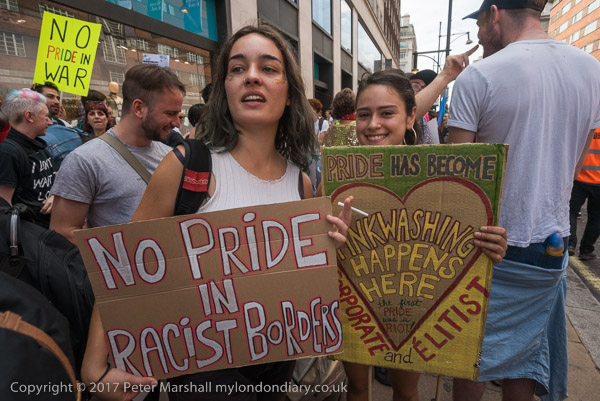
In 2017 the commercialisation of Pride had reached new heights, with participation limited to those groups who had officially applied and got pride armbands being allowed to join the procession. At least in part this seems to have been an attempt to exclude groups such as the Migrants Rights and Anti-Racist Bloc organised and led by Movement for Justice and including Lesbians & Gays Support The Migrants, No Pride in War and London Supports Istanbul Pride who had joined in towards the back of the 2016 parade.
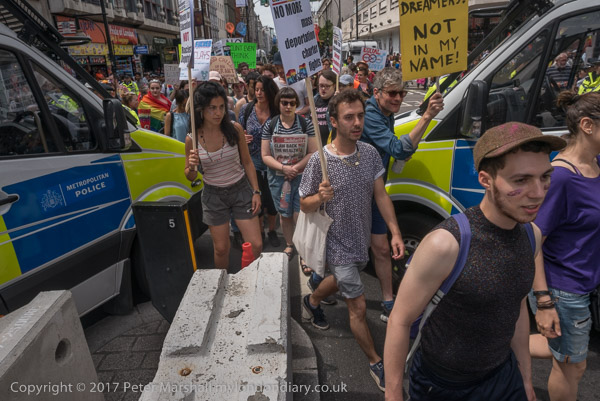
I don’t know if the bloc had made an application, but I think probably not, and they certainly didn’t have the armbands. They marched between police vans that were blocking the entrance to Oxford Circus in front of the march with others lifting up barriers and tried to make their way past the front of the march to join in further back but were stopped by Pride stewards.
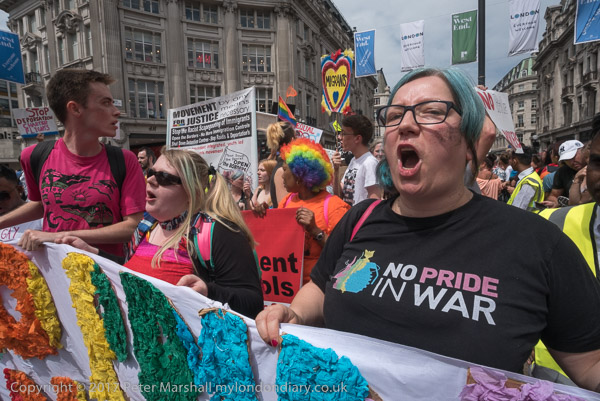
This left them immediately in front of the heavily stewarded front of the official parade, and they refused to move unless they were allowed to make their way into the parade. A stalemate ensued, with Pride stewards insisting that they had to leave the area, and the Migrants Rights and Anti-Racist Bloc refusing to shift. Police tried to get them to move and also tried to get the Pride stewards to let them into the march, but they remained adamant.
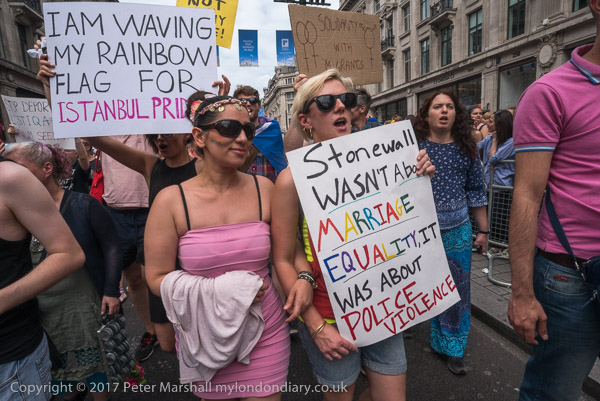
It was time for the parade to start, but it couldn’t. Eventually police sorted out the issue by holding back the official parade while the Migrants Rights and Anti-Racist Bloc marched along the parade route past the large crowds to a great deal of applause and some aggravation from Pride stewards along it.

Around a quarter of an hour later, the official parade started, following them along the route. But it was again held up as the front of the procession reached Whitehall, as some of the No Pride in War protesters lay down on the tarmac in front of it. The procession was held up for another 15 minutes as police tried to persuade them to leave – and eventually I think they all got up when finally threatened with arrest.

The Migrants Rights and Anti-Racist Bloc had made a stand and had reclaimed Pride as a protest – with a separate official Pride following behind – and the No Pride In War had also made their point against the inclusion of the military in the official event. But “curiously” for such a high-profile protest in an event covered by huge numbers of press from around the world I think it went totally unreported in the mainstream media. For them, Pride is just a colourful spectacle.
